#CarSensors
Explore tagged Tumblr posts
Text
Automotive Calibration Service Market Size, Share & Trends Analysis
According to Market Statistix, the Automotive Calibration Service Market revenue and growth prospects are expected to grow at a significant rate during the analysis period of 2024-2032, with 2023 as the base year. Automotive Calibration Service Market research is an ongoing process. Regularly monitor and evaluate market dynamics to stay informed and adapt your strategies accordingly. As a market research and consulting firm, we offer market research reports that focus on major parameters, including Target Market Identification, Customer Needs and Preferences, Thorough Competitor Analysis, Market Size and market Analysis, and other major factors. In the end, we provide meaningful insights and actionable recommendations that inform decision-making and strategy development.
The Automotive Calibration Service Market is projected to experience steady growth, expanding at a CAGR of 5% over the forecast period.
Who are the key players operating in the industry?
Applus IDIADA, FEV Group, TÃœV SÃœD, Millbrook, Ricardo, AVL, Continental AG, HORIBA MIRA, SGS, DEKRA
Request a sample on this latest research report Automotive Calibration Service Market spread across 100+ pages and supported with tables and figures is now available @ https://www.marketstatistix.com/sample-report/global-automotive-calibration-service-market
Automotive Calibration Service Market Overview and Insights:
Market Statistix is solidifying its reputation as a leading market research and consulting service provider, delivering data-driven insights that help businesses make informed strategic decisions. By focusing on detailed demand analysis, accurate market forecasts, and competitive evaluations, we equip companies with the essential tools to succeed in an increasingly competitive landscape. This comprehensive Automotive Calibration Service market analysis offers a detailed overview of the current environment and forecasts growth trends through 2032. Our expertise enables clients to stay ahead of the curve, providing actionable insights and competitive intelligence tailored to their industries.
What is included in Automotive Calibration Service market segmentation?
The report has segmented the market into the following categories:
Segment by Type: Overview, Engine Calibration, Transmission Calibration, ADAS Calibration, Emissions Calibration, Chassis Calibration
Segment by Application: Overview, Performance Optimization, Emissions Compliance, Safety Systems, Fuel Efficiency, Autonomous Driving
Automotive Calibration Service market is segmented by company, region (country), by Type, and by Application. Players, stakeholders, and other participants in the Automotive Calibration Service market will be able to gain the upper hand as they use the report as a powerful resource. The segmental analysis focuses on revenue and forecast by Type and by Application in terms of revenue and forecast for the period 2019-2032.
Have a query? Market an enquiry before purchase @ https://www.marketstatistix.com/enquiry-before-buy/global-automotive-calibration-service-market
Competitive Analysis of the market in the report identifies various key manufacturers of the market. We do company profiling for major key players. The research report includes Competitive Positioning, Investment Analysis, BCG Matrix, Heat Map Analysis, and Mergers & Acquisitions. It helps the reader understand the strategies and collaborations that players are targeting to combat competition in the market. The comprehensive report offers a significant microscopic look at the market. The reader can identify the footprints of the manufacturers by knowing about the product portfolio, the global price of manufacturers, and production by producers during the forecast period.
As market research and consulting firm we offer market research report which is focusing on major parameters including Target Market Identification, Customer Needs and Preferences, Thorough Competitor Analysis, Market Size & Market Analysis, and other major factors.
Purchase the latest edition of the Automotive Calibration Service market report now @ https://www.marketstatistix.com/buy-now?format=1&report=131
The Automotive Calibration Service market research study ensures the highest level of accuracy and reliability as we precisely examine the overall industry, covering all the market fundamentals. By leveraging a wide range of primary and secondary sources, we establish a strong foundation for our findings. Industry-standard tools like Porter's Five Forces Analysis, SWOT Analysis, and Price Trend Analysis further enhance the comprehensiveness of our evaluation.
A Comprehensive analysis of consumption, revenue, market share, and growth rate is provided for the following regions:
-The Middle East and Africa region, including countries such as South Africa, Saudi Arabia, UAE, Israel, Egypt, and others.
-North America, comprising the United States, Mexico, and Canada.
-South America, including countries such as Brazil, Venezuela, Argentina, Ecuador, Peru, Colombia, and others.
-Europe (including Turkey, Spain, the Netherlands, Denmark, Belgium, Switzerland, Germany, Russia, the UK, Italy, France, and others)
-The Asia-Pacific region includes Taiwan, Hong Kong, Singapore, Vietnam, China, Malaysia, Japan, the Philippines, South Korea, Thailand, India, Indonesia, and Australia.
Browse Executive Summary and Complete Table of Content @ https://www.marketstatistix.com/report/global-automotive-calibration-service-market
Table of Contents for the Automotive Calibration Service Market includes the following points:
Chapter 01 - Automotive Calibration Service Executive Summary
Chapter 02 - Market Overview
Chapter 03 - Key Success Factors
Chapter 04 - Automotive Calibration Service Market – Pricing Analysis Overview
Chapter 05 - Overview of the History of the Automotive Calibration Service Market
Chapter 06 - Automotive Calibration Service Market Segmentation [e.g. Type (Overview, Engine Calibration, Transmission Calibration, ADAS Calibration, Emissions Calibration, Chassis Calibration), Application (Overview, Performance Optimization, Emissions Compliance, Safety Systems, Fuel Efficiency, Autonomous Driving)]
Chapter 07 - Analysis of Key and Emerging Countries in the Automotive Calibration Service
Chapter 08 - Automotive Calibration Service Market Structure and Value Analysis
Chapter 09 - Competitive Landscape and Key Challenges in the Automotive Calibration Service Market
Chapter 10 - Assumptions and Abbreviations
Chapter 11 - Market Research Approach for Automotive Calibration Service
About Market Statistix:
Market Statistix is an expert in the area of global market research consulting. With the aid of our ingenious database built by experts, we offer our clients a broad range of tailored Marketing and Business Research Solutions to choose from. We assist our clients in gaining a better understanding of the strengths and weaknesses of various markets, as well as how to capitalize on opportunities. Covering a wide variety of market applications, We are your one-stop solution for anything from data collection to investment advice, covering a wide variety of market scopes from digital goods to the food industry.
Contact Information:
Market Statistix
Media & Marketing Manager
Call: +91 9067 785 685
Email: [email protected]
Website: www.marketstatistix.com
#AutomotiveCalibration#ADAS#VehicleSafety#CarSensors#AutoService#CalibrationServices#AutonomousVehicles#DriverAssistance#SmartVehicles#AutomotiveTech#CarMaintenance#PrecisionCalibration#AutoIndustry
0 notes
Text
Understanding Vehicle Sensors for Optimal Performance

Just to let you know, most cars on the road today contain 60-100 sensors constantly monitoring and managing your vehicle. These sensors have significant importance in terms of performance as well as efficiency measurement. If only one of these sensors is out of whack you could be getting an awful gas mileage, or even worse, stuck on the side of the road! Common Sensors Include: 1.Oxygen Sensor: Electrically regulated to make modification of air-fuel mixture in order to allow correct combustion. 2.Mass Airflow Sensor: Measures the air that is champ for the engine. 3.Throttle Position Sensor: It feeds back to the engine about the rate of change of the throttle. Signs of Sensor Failure: 1.Turn Signal operation. 2.These include cases of poor durability, low horsepower, low torque or horsepower to weight ratio. 3.Low idle speed or slow engine speed after the vehicle has come to a halt. If you experience any of these signs, then your vehicle should be checked by a professional. If you want to save your time and money, it’s crucial to take care of your sensors, looking at how your car works and saves money.
Read more: Making sense out of vehicles sensors
0 notes
Text
All About Shift-by-Wire Technology
April 14, 2024
by dorleco
with no comment
Autonomous Vehicle Technology
Edit

Shift-by-Wire Technology
Introduction:
The automotive industry has seen significant change throughout the years due to a persistent focus on efficiency and innovation. One of the most encouraging recent developments is the introduction of shift-by-wire technology, a novel approach to transmission control. SBW introduces electronic connections in place of traditional mechanical linkages, ushering in a new era of superior car design. As we embark on this journey through the world of SBW technology, let’s analyze how this technology is poised to revolutionize the way we travel by making our automobiles smarter, safer, and more environmentally friendly.
The Evolution of Transmission Control
In automobile transmissions, the gear changer and transmission were usually physically attached. These mechanical connections have served us well, but they are not without problems. In many cases, they are unable to fulfill the demands of modern driving and might be cumbersome and prone to damage.
Introducing Shift-by-Wire Technology
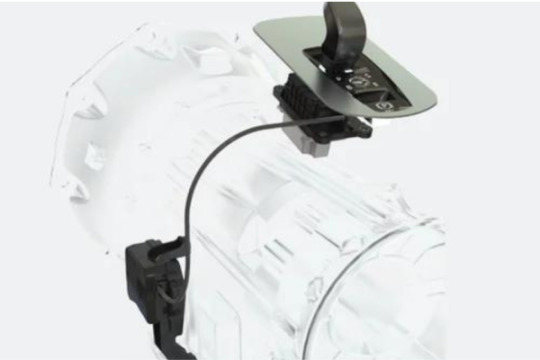
SBW has made it possible to replace mechanical connections with electronic impulses. Instead of manually engaging the transmission by pushing a lever or adjusting a gear selector, drivers now engage the transmission through electronic interfaces. The transition to digital control has generated a multitude of options.
1. Smoothness and Accuracy: Gear selection is remarkably precise thanks to shift-by-wire technology. Electronic signals allow for quicker, smoother, and more accurate shifts. Drivers can enjoy a smooth and comfortable driving experience.
2. Intelligent Adaptability: SBW systems offer a high level of flexibility. They can be used in conjunction with advanced driver assistance systems (ADAS) and artificial intelligence (AI) algorithms to provide autonomous gear selection based on load, traffic conditions, and even driver behavior. This adaptive intelligence also enhances fuel efficiency and performance.
3. Decreased Mechanical Complexity: By eliminating mechanical linkages, SBW streamlines the transmission system. This lowers the need for maintenance and creates more space within the vehicle, which allows for more imaginative interior design options.
4. Eco-Friendly Driving: By optimizing gear selection and reducing emissions, shift-by-wire technology promotes fuel efficiency. Even more benefits are in store for electric and hybrid vehicles thanks to SBW’s enhanced capacity to combine electric motors with conventional transmissions.
5. Enhanced Safety: SBW technology can stop inadvertent gear changes and alert drivers in hazardous situations, among other safety features. This results in safer driving for all users of the road.
Shortly, autonomous driving will be possible, thanks in large part to shift-by-wire technology. It ensures that cars may effortlessly transition between manual and automated driving modes by enabling the seamless integration of autonomous technologies.
Benefits of Shift-by-Wire Technology

Electrical controls are utilized in shift-by-wire technology, which is typically found in automatic transmissions, to manage gear shifting in a car. When contrasting this technology with traditional mechanical systems, the following advantages can be obtained:
1. Precision and Smoothness: The precision that shift-by-wire systems offer for managing gear changes makes shifts more fluid and smooth. Driving might become more fun and calming as a result.
2. Decreased Mechanical Wear: Since shift-by-wire systems require fewer mechanical components, they frequently experience reduced wear and tear over time. As a result, transmission longevity may increase and maintenance costs may decrease.
Shift-by-wire technology can be seamlessly integrated with advanced driver assistance systems (ADAS) to improve the functionality of features like adaptive cruise control and lane-keeping assistance. It can also facilitate the development of automated driving technology.
3. Weight and Space Savings: Shift-by-wire systems can require less space and weigh less than traditional mechanical connections. As a result, vehicles might wind up being lighter, which would enhance handling and fuel efficiency.
4. Remote diagnostics: Thanks to shift-by-wire technology, automakers can monitor and diagnose issues remotely, facilitating quicker and more efficient maintenance and repair processes.
5. Decreased Noise and Vibration: Shift-by-wire systems reduce noise and vibration associated with gear changes by eliminating physical connections, which quiets the cabin and improves comfort.
Shift-by-Wire Technology Drawbacks
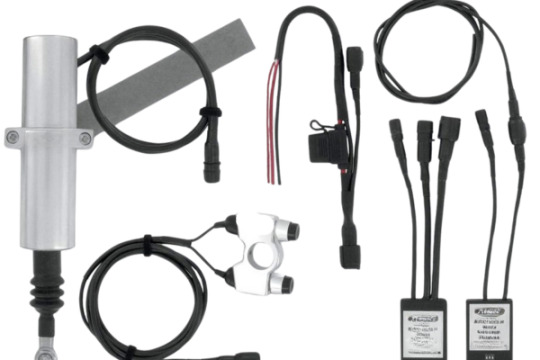
As was already noted, shift-by-wire technology has several benefits, but it also has certain possible drawbacks and difficulties:
1. Dependability difficulties: There are dependability difficulties with electronic systems since they are prone to malfunctions or breakdowns. Failure of the shift-by-wire technology could result in issues in choosing a gear and could put the vehicle in danger.
2. Cost: Shift-by-wire systems are usually more complex and costly to build and repair than standard mechanical connections. This may result in increased upfront costs for both automakers and customers.
3. Upkeep and Fixtures: Qualified specialists and advanced diagnostic equipment are often needed when shift-by-wire systems require maintenance or repairs. Vehicle owners may experience higher maintenance expenses and longer downtime as a result.
4. Difficulties with Adaptation: Some drivers may prefer the old-fashioned mechanical shifters’ quickness and control. Shift-by-wire systems may require some time for drivers to get used to, and this change may not be well received.
5. Risks to Cyber Security: As shift-by-wire systems become more interconnected and integrated into automotive networks, they may become vulnerable to hackers. Securing these systems is crucial to preventing unwanted access or modification.
6. Intricacy: The intricacy of shift-by-wire technology can make it more challenging to identify and fix issues with it, increasing maintenance costs and delaying problem-solving times.
Conclusion:
Let’s sum up by saying that shift-by-wire technology is a huge advancement for the car industry. It has many great features, like smooth gear changes, precise control, integration with state-of-the-art driver assistance systems, customization options, weight and space savings, safety features, adaptability to driving conditions, remote diagnostics, reduced noise and vibration, and a modern design. These benefits enhance general vehicle performance, security, convenience of driving, and fuel efficiency.
But it’s important to be aware of the potential problems and challenges that shift-by-wire technology may bring about. These include issues with compatibility, cyber security risks, increased costs, maintenance headaches, power dependence, problems with adaptation, and the need for redundancy and fail-safe systems.
Shift-by-wire technology is becoming more and more popular as manufacturers carry out intensive R&D and testing to minimize these disadvantages. It is anticipated that many of these problems will be fixed as technology advances and matures, and shift-by-wire technology will proliferate in the automotive industry, offering improved vehicle performance and driving experiences.
Consider registering for one of our training programs if you want to learn more about the technical components of shift-by-wire technology, such as modeling and reproducing them in virtual environments. For more information on how our experience developing shift-by-wire technology can help you, send an email to [email protected].
0 notes
Text
#carsensor#autonomous driving#radar#security#AutomotiveSensors#ADAS#SmartCars#Innovation#Mobility#electronicsnews#technologynews
0 notes
Text
菜々緒 が出演する リクルート カーセンサー のCM 「Carsensor’s High」篇
https://www.carsensor.net/ Continue reading 菜々緒 が出演する リクルート カーセンサー のCM 「Carsensor’s High」篇
0 notes
Text
"Navigating the Park Assist Revolution: Market Dynamics and Forecast 2024-2033"
Automotive Intelligence Park Assist Systems are revolutionizing the way drivers navigate tight parking spaces with cutting-edge technology and advanced sensors. These systems use a combination of cameras, ultrasonic sensors, and intelligent algorithms to guide drivers into parking spots with precision and ease. By detecting obstacles and providing real-time feedback, Park Assist Systems reduce the risk of accidents and minimize the stress of parallel or perpendicular parking. As vehicles become smarter, these systems are playing a pivotal role in enhancing convenience, safety, and driving confidence, making urban parking challenges a thing of the past.
#ParkAssist #SmartParking #AutomotiveTechnology #ParkingSolutions #IntelligentParking #VehicleAssist #ParkingAid #AutoTech #DrivingEase #SensorTechnology #UrbanDriving #CarInnovation #SafetyFeatures #SmartParkingAssist #AutomotiveIntelligence #ParkingTech #CarSensors #VehicleGuidance #ParallelParking #ModernDriving #TechInCars
0 notes
Photo
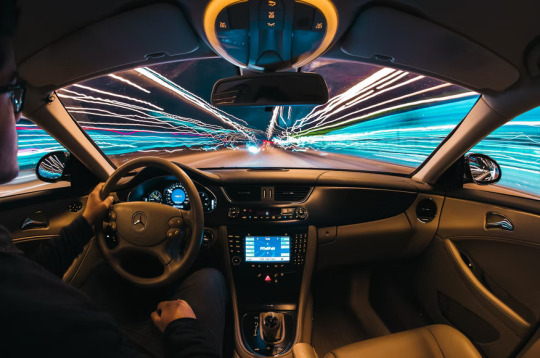
RED SENSORS: 3D LIDAR, PRECISION LASER AUTOMOTIVE AND INDUSTRIAL TECHNOLOGY Read More....https://redsensors.com/.
0 notes
Photo

OEM vehicle sensors,our sensor can use for barrier gate,autogate,garage door,parking system,traffic control,more www.trafficloopdetector.com whatsapp:+8618926542745 Alan#OEMvehiclesensors#carsensors https://www.instagram.com/p/Bw4QCrrnVc2/?utm_source=ig_tumblr_share&igshid=1s8pe9lyzy2ve
0 notes
Text
Different Types of Car Sensors and their Functions
April 11, 2024
by dorleco
with no comment
Others

car sensors
When issues or obstacles arise in your car, an electrical device known as a car sensor monitors them and alerts the driver. These automotive sensors frequently modify the engine to fit the situation. Car sensors are becoming an essential part of a modern car. The car is now smarter than before because its sole goal is to identify any threat to the vehicle and its occupants.
Previously, sensors could only be used by the engine. However, most vehicle operations now rely on a sensor, thanks to technological advancements. Car sensors monitor the car’s oxygen or fuel intake and predict any mechanical issues.
What Purposes Do Car Sensors Serve?
“Sensing” and “monitoring,” as their names suggest, are the main functions of car sensors.
The primary function of automobile sensors is data gathering and transmission to the Electronic Control System (ECS). The ECS uses algorithms to assist people in taking specific actions in a given situation.
These car sensors and ECS translate the physical and chemical change variables into electric signals, which inform the driver of additional tasks.
How do car sensors work?
Think about the human body to gain a basic grasp of the different types of car sensor and their functions.
Our five senses help us remain aware of the environment around us because we are mindful of them. Abrupt changes in our surroundings cause reflexes. Similarly, our body notifies the brain to start the proper reaction when something foreign enters our body or breaks down unexpectedly.
Cars are automotive sensors, just like these sensory organs. They let you know if there’s a problem with any of its interior parts or if something is blocking the way. Computerization and new algorithms have improved the precision of these sensing capabilities in today’s automobiles.
Automobile sensors detect issues and notify the CPU when they appear. The processor will provide the rider with further information by blinking the dashboard or screen lights or by issuing an auditory alert. Moreover, robots can initiate a reflex action in case immediate aid is required.
For instance, the fuel level sensor in your car may tell you how much fuel it has left in it. When the gasoline becomes low enough to need refueling, it will notify you. The fuel level sensor will also alert you if there is unnecessary fuel drainage or insufficient fuel in the tank. Modern cars even have GPS attached to the gasoline level sensor to enhance your driving experience.
Car Sensor Types
In recent years, modern cars have incorporated an increasing number of sensors. Enhancing a car’s detection capabilities ensures a safe and comfortable journey as well as an extended vehicle lifespan.
The modern automobile is equipped with a multitude of sensors. However, not every car has every one of them. Because of this, these 12 essential types of automotive sensors are found in almost every vehicle.
1. Oxygen Sensors

Oxygen sensors, often known as O2 sensors, monitor the oxygen content of vehicle exhaust systems. After receiving this data, the VCU makes the necessary adjustments to the air/fuel mixture to ensure optimal engine performance.
2. Mass Air Flow (MAF) Sensor

If the MAF sensor fails, the vehicle’s VCU won’t know how much fuel to inject into the combustion chamber, which will result in subpar engine performance.
3. Engine Oil Level Sensor
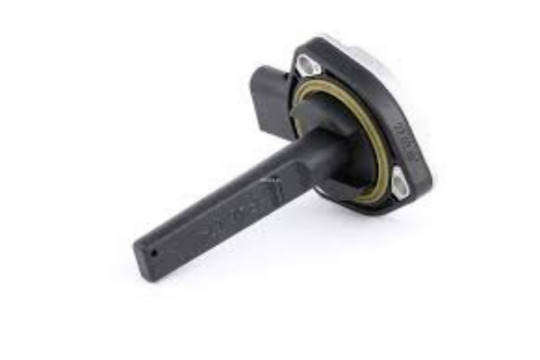
Maintaining an engine’s oil level at the recommended level as instructed by the manufacturer is essential to preventing catastrophic engine damage.
This sensor, which is often found on the side of the oil pan, is what causes the engine oil warning light to show on the dashboard of the majority of cars. If this light comes on, check the oil levels in your engine immediately.
4. Pressure Engine Oil Sensor
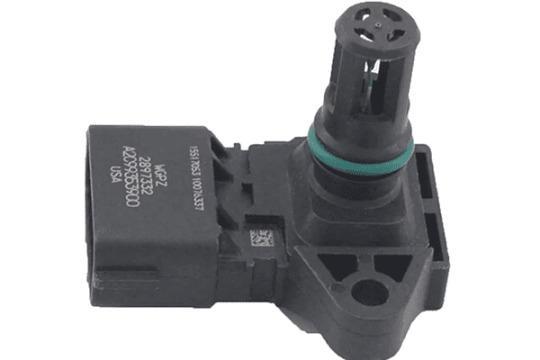
The engine oil pressure sensor, which is normally located at the base of the cylinder head, is connected to the engine oil warning light on the dashboard. In certain autos, it could also be related to the check engine warning light.
5. Coolant Temperature Sensor
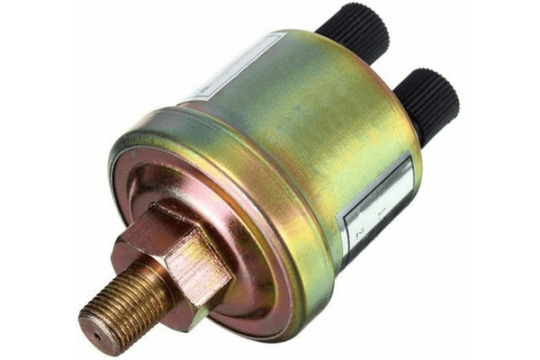
Heat is the enemy of efficiency for anyone with even a cursory understanding of elementary physics. Every modern engine has a robust cooling system, which maintains the engine operating at its optimal temperature for optimal efficiency.
If the coolant temperature goes too high, the sensor sends a signal to the VCU, which causes the dashboard’s coolant temperature warning light to illuminate. If this happens, you should stop immediately to prevent the engine from overheating and perhaps seizing.
6. Coolant Level Sensor
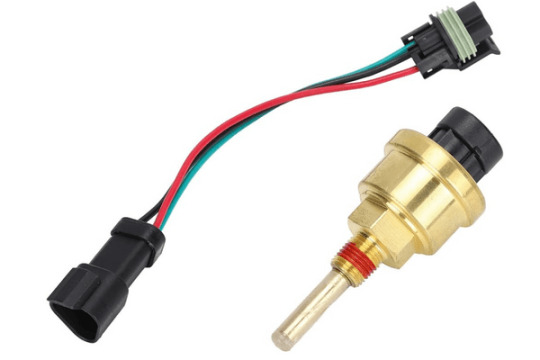
You should only use coolants that the manufacturer has approved to provide optimal cooling and lower the risk of an overheated engine.
7. Air Intake Temperature Sensor
The temperature of the air entering the engine may affect how well the car performs. More oxygen molecules are found in colder air because it is denser, and vice versa. The air intake temperature sensor is located between the intake filter and the intake manifold, just like the previously described MAF sensor.
When the air intake temperature sensor and MAF sensor are combined in some cars, the VCU can calculate the ideal fuel injection volume to keep the engine running efficiently.
8. Manifold Absolute Pressure (MAP) Sensor

In non-naturally aspirated engines, this sensor is usually located in the intake track or above the intake manifold. An issue with the MAP sensor may result in lower mileage and frequent engine stalling or surging.
9. Boost Pressure Sensor
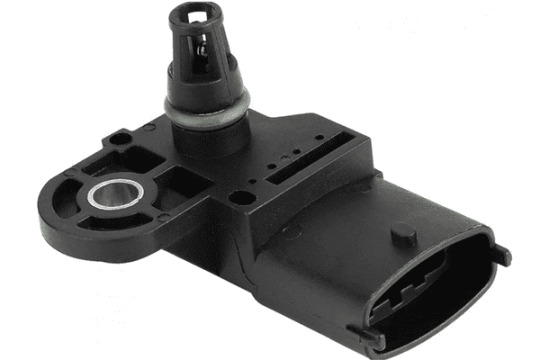
Boost pressure sensors are only found in cars with forced induction, particularly in turbocharged or supercharged vehicles.
These sensors, which are frequently located inside the intake pipes of engines, could break down and cause the engine to perform less well.
Since the VCU cannot supply enough fuel for the amount of air entering the engine, failing the sensor may also result in difficulties starting the engine.
10. Engine knock sensor

Engine banging can cause serious damage to an engine. Knocking is a 4-stroke engine cycle imbalance that can occur when the air-fuel combination ignites before the ignition phase.
Ignoring a defective knock sensor can cause major harm to an engine by drastically lowering power and efficiency.
11. Air Bag Sensor

When driving carefully, airbag sensors ensure the protection of the occupants in the event of an incident. Airbag sensors are triggered by events like hard stops or high-impact pressure.
After receiving a signal from airbag sensors, the inflator system in your automobile injects nitrogen gas into the airbag. In the case of a side, rear, or front collision, this acts as a cushion.
12. Nox Sensor:

Nitrogen oxide, along with hydrocarbons and carbon monoxide, is a hazardous environmental pollutant. As a result, strict regulations are in place for emissions from vehicles that pose a risk. The composition of a vehicle’s nitrogen oxide emissions is also covered by these laws. Moreover, NOx sensors prevent your car’s exhaust system from being over-exhausted.
In cars, the selective catalytic reduction system (SCR) is adjacent to the NOx sensors.
Conclusion:
In conclusion, the plethora of automobile sensors found in modern vehicles carry out a range of functions vital to the car’s operation, security, and comfort. These sensors are expertly crafted to monitor multiple aspects of the vehicle’s surroundings and functioning, ensuring optimal efficiency and enhancing the overall driving experience.
To optimize efficiency and reduce environmental impact, engine sensors — such as mass airflow, oxygen, and coolant temperature sensors — manage essential components like engine temperature, pollutants, and air-fuel mixture.
Safety sensors like TPMS, ABS, and traction control sensors significantly improve driver safety by detecting wheel slippage, maintaining stability during braking, and monitoring tire pressure for safe handling and a lower probability of collision.
Particulate matter and EGR sensors, among other environmental sensors, are crucial for regulating emissions, ensuring compliance with legal requirements, and lessening the vehicle’s environmental effects.
Driver assistance sensors, including cameras, radars, and ultrasonic sensors, enable advanced driver assistance systems like adaptive cruise control and lane departure warning. These automotive sensors facilitate functions like autonomous driving and collision prevention while also enhancing driver awareness.
Comfort and convenience sensors, including rain, ambient light, and proximity sensors, enhance driver comfort and convenience by automatically adjusting features like interior lighting, parking aids, and windshield wipers depending on external circumstances.
As automotive technology advances, the role that sensors play in enhancing the driving experience will only increase. Together, these sensors form an advanced network that continuously gathers and processes data, providing drivers with information that will usher in a new era of safer, smarter, and ecologically friendly transportation.
1 note
·
View note
Text
Tips for caring for the camera and sensor parking the car correctly

Cameras and parking sensors have become a feature that is often pinned on the car as a standard component. Same with other components in the car, parking cameras and sensors also need maintenance to be able to work optimally.
Both of these components are included in electrical devices which are quite vulnerable to damage if they do not get proper maintenance. Because of that, these two components are required to receive care in order to function properly.
The following is an easy way to take care of the car parking camera and sensor as reported by suzuki.co.id, Sunday (05/05/2019).
Read More At HERE
0 notes
Photo

🚙 CAR PARKING SENSOR 🚙 👉🏻 Follow @motorwheelrestyling . . . Car parking sensors which can be used for both front and rear end 🚙 Sensors protect your car from any damage. ✅ Highly effective product ✅ Safeguard your car from any external damage ✅Easy to install ✅ PAN delivery available For order related query and other information DM 👉🏻 @motorwheelrestyling or 📱Whatsapp @8882232856,8750137154 . . #sensor #carsensor #carsensors #cars #car #rearsensor #rearsensors #frontsensor #frontsensors #carlovers #carsafety #carsafetytips #carsafetyissues #carsafetykit #swift #swiftmodified #swiftdzire #swiftlover #swiftlovers #swiftcarclub #brezza #brezzamodified #vitarabrezza #i20 #i20modified #i20sportz #hyundaivenue #hyundai #hyundaicreta #hyundaiverna (at Jalandhar / ਜਲੰਧਰ) https://www.instagram.com/p/CQJMJz4pnEt/?utm_medium=tumblr
#sensor#carsensor#carsensors#cars#car#rearsensor#rearsensors#frontsensor#frontsensors#carlovers#carsafety#carsafetytips#carsafetyissues#carsafetykit#swift#swiftmodified#swiftdzire#swiftlover#swiftlovers#swiftcarclub#brezza#brezzamodified#vitarabrezza#i20#i20modified#i20sportz#hyundaivenue#hyundai#hyundaicreta#hyundaiverna
0 notes
Video
instagram
POWER PACKED HOT ROD🔥🔥🔥 🎥 Credit = @electronics_world5 🎥 Credit = @electronics_world5 🎥 Credit = @electronics_world5 Dm for credit or removal request ( no coppy right intended) #electricalengineering #electronicsprojects #electrician #electricianslibrary #electricianlife⚡️ #electricianslife #nanoreef #electricalengineering #electrical_engineering #motivation #arduinouno #carsensors #embriodery #embedded #embededsystem #technologynews #pak #paintings #raspberries #excellence #excel #ohmygod #ohm #engenheiro #softwaredeveloper #instagood #instamood #instagramers #manufacturer #manufacturingengineering #manufacturingengineering https://www.instagram.com/p/CFDF-CsFIpB/?igshid=3gs95dlzxgyj
#electricalengineering#electronicsprojects#electrician#electricianslibrary#electricianlife⚡️#electricianslife#nanoreef#electrical_engineering#motivation#arduinouno#carsensors#embriodery#embedded#embededsystem#technologynews#pak#paintings#raspberries#excellence#excel#ohmygod#ohm#engenheiro#softwaredeveloper#instagood#instamood#instagramers#manufacturer#manufacturingengineering
0 notes
Video
instagram
Here’s another gadget I’d like to put up for discussion! - Taking a closer look at this DIY project, do you think it’s possible? - - Let me know your thoughts down in the comments! - - DIY universal remote controller Tag your friends. - - - #Electronics #quiz #electricalengineering #electrical #electricianlife⚡️ #electricians #electrical_engineering #electronicsquiz #electronicsquestions #arduinoproject #arduino #arduinouno #electronicsprojects #sensors #carsensor #embeddedsystems #pak #technology #digitalelectronics #IoT #raspberrypi3 #raspberrypi3projects (at Busan, South Korea) https://www.instagram.com/p/B8z3wLDFjXj/?igshid=17r81vokl0r2w
#electronics#quiz#electricalengineering#electrical#electricianlife⚡️#electricians#electrical_engineering#electronicsquiz#electronicsquestions#arduinoproject#arduino#arduinouno#electronicsprojects#sensors#carsensor#embeddedsystems#pak#technology#digitalelectronics#iot#raspberrypi3#raspberrypi3projects
7 notes
·
View notes
Photo

New Hyundai Creta 2020 had a Black and Tan interior along with fog drl and front sensor upgrade, all came out well. Our dedicated team members perfectly handled everything and collectively its looking cool..😍 leave your valuable comments. 👍 #hyundai #hyundaicreta #carseatcovers #carupholstery #caraccessories #nsvauto #carsensor #fogdrl #leatherseatcover #foxleather #ffcaraccessories #caraccessorieschennai #Creta2020 #carlighting #Chennai #tamilnadu #12volts #carlifestyle #instacars #instacar #carupholstery #hyundaiclub #cretaownersclub #creta2020 #hyundaiindia #creta2020interior #carmodification #carmodifierchennai #audioinstaller #caraccessorieschennai (at FF Car Accessories) https://www.instagram.com/p/CJPvARRDhLa/?igshid=lsnwffbk2gyn
#hyundai#hyundaicreta#carseatcovers#carupholstery#caraccessories#nsvauto#carsensor#fogdrl#leatherseatcover#foxleather#ffcaraccessories#caraccessorieschennai#creta2020#carlighting#chennai#tamilnadu#12volts#carlifestyle#instacars#instacar#hyundaiclub#cretaownersclub#hyundaiindia#creta2020interior#carmodification#carmodifierchennai#audioinstaller
0 notes